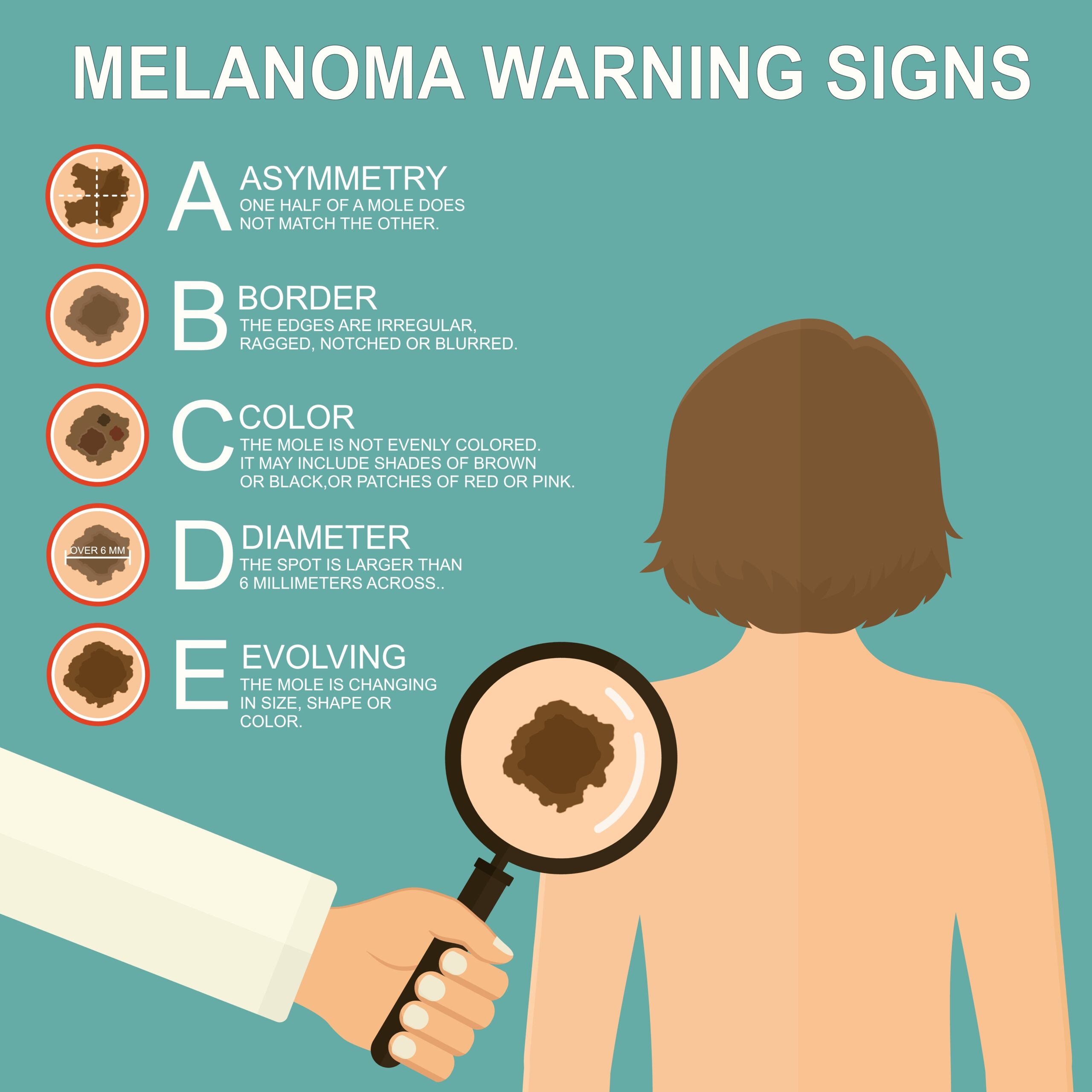
Skin Cancer Awareness : A Focus on Melanoma
May is Skin Cancer Awareness Month and because of my own Melanoma diagnosis earlier this year I have been diving into the literature to uncover everything I could find on diagnosis, treatment, and prevention. Thankfully my melanoma was very superficial and only required a wide excision and BUNCH of sutures leaving a nice scar. I have been diligently going to the dermatologist yearly or more often at times for many years based on my fair skin, number of moles, and a family history of skin cancer. Thanks to growing up in the tanning bed era of the 90s/early 2000s and summer after summer spent lifeguarding and at the beach, I think this pushed my risk over the edge. Thanks to my wonderful team, (shout out to Asarch Dermatology) who diligently photographed and checked every spot and noticed just a slight change to one and removed it early, the prognosis is good but melanoma can be devastating if left unchecked. This month I will be focusing on Skin Cancer Awareness and sharing more on what to look for in skin changes that could indicate skin cancer and what to do to prevent skin cancer from the outside in and inside out. Let’s dive in!
What is Melanoma?
Melanoma is one type of skin cancer where DNA in the skin cells is damaged which leads to uncontrolled growth of these mutant cells. The body’s immune system usually does a good job cleaning up these abnormal cells but not all the time which can lead to skin cancer. Melanoma arises from a particular skin cell called a melanocyte, found in the upper layer of the skin. Melanocytes produce pigment, such as in moles or when you get a sun tan.
Possible Risk factors for Skin Cancer and Melanoma
- Sun exposure and most notably, severe sunburns during childhood or throughout ones life will increase the risk of melanoma. Fact: having 5 or more sunburns doubles your risk of melanoma.
- Indoor tanning beds lead to an increased risk of all types of skin cancer, including melanoma.
- Having many moles puts one at higher risk of developing melanoma.
- Family history leads to an increased risk. For example, ff a person has a close relative with melanoma, that increases the risk of developing melanoma by 2-3 times compared to average risk.
- There are specific genes known to increase the risk of melanoma but these are rare.
- Previous skin cancer history puts one at higher odds of developing more melanomas.
- Race or ethnicity plays a role as, white people are at a 20 time increased of melanoma compared to black people but anyone can develop a melanoma regardless of race.
- Melanoma is most common in the later decades of life with the average age of melanoma development being 50 years old but we are seeing more cases in younger individuals.
- Weakened or suppressed immune system either natural or medication induced immunosuppression leads to an increased risk of developing skin caner
What are the Signs and Symptoms of Melanoma?
The ABCDE’s of Melanoma
- Asymmetry: one side of the mole does not match the other
- Border: the edges of the mole are uneven, blurred, not rounded
- Color: uneven distribution of color or unusual colors like black, white, gray, red, blue
- Diameter: larger than 6mm or about ¼ inch but melanoma CAN be smaller
- Evolving: there have been changes to the moles color, size, shape, texture
How is Melanoma diagnosed?
Melanomas are diagnosed with a biopsy of the lesion or mole. This helps to diagnose the type of cells present to differentiate it between normal skin cells and other types of cancer such as basal cell or squamous cell. They are also able to assess the depth/thickness, how fast the cells are dividing, the type of melanoma, presence of immune cells, and they can also check for certain markers in the cells which can help to decide on therapies for treatment and prognosis. If a melanoma is deep into the layers of the skin it can extend to other tissues including lymph nodes. If a melanoma is considered a “thin” lesion or less than 1mm thick it is unlikely that it has spread to the lymph nodes or other areas of the body. If it is a deeper lesion more testing may be done to look for other sites of spread such as the lymph nodes.
What are the treatments for Melanoma?
I won’t be going into detail with this section but the lesion is always removed with a wide excision and depending on the stage and if there are any metastasis to other areas, this will determine what the treatment plan will entail. The good news is that there are new immunotherapies that are very effective in treating certain types of melanoma so in recent years the prognosis has improved considerably.
Next week, we will continue this Skin Cancer Awareness series and I will discuss skin cancer prevention and share some of my favorite sun protection products!
For more information on Melanoma visit the Skin Cancer Foundation for more excellent resources!
For more information about Alison Percowycz, NP and Wild Rice Wellness please visit our ABOUT page!
